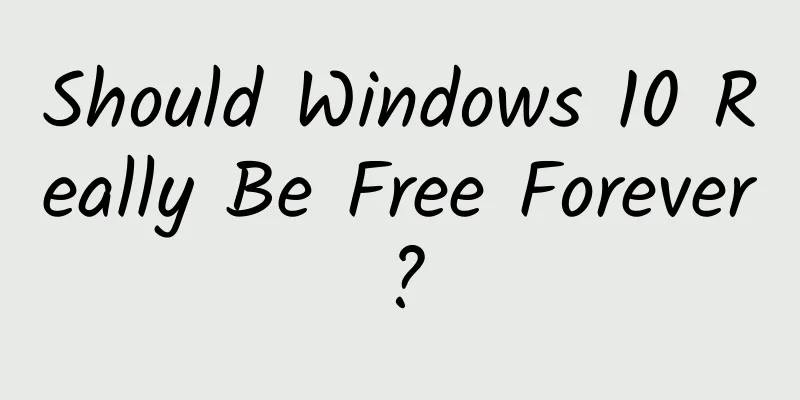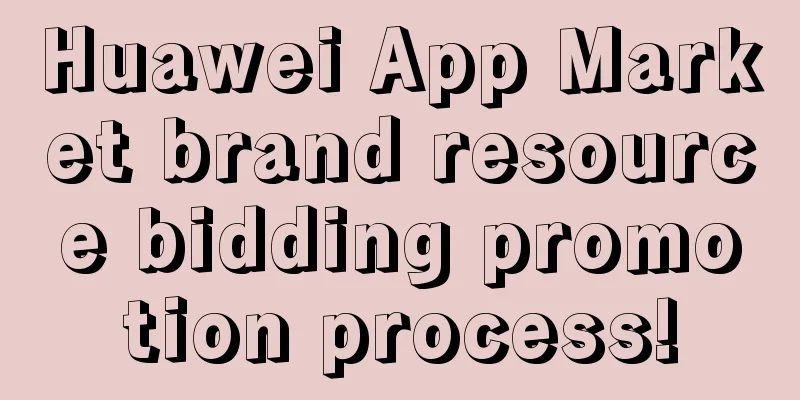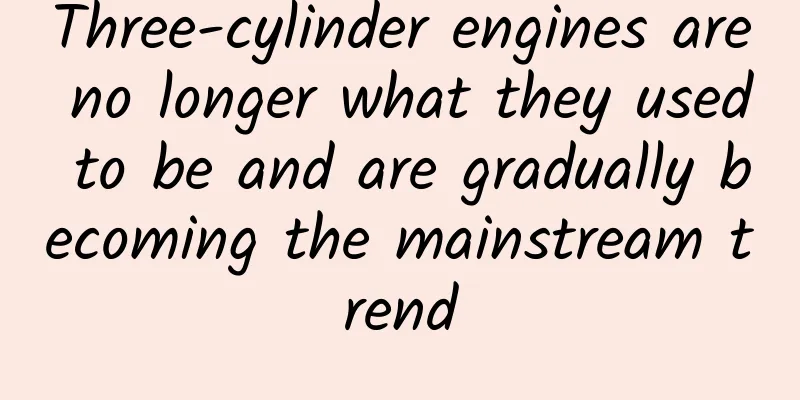Should Windows 10 Really Be Free Forever?

|
A few days ago, Microsoft's Windows 10 free upgrade campaign ended. After the deadline, you can only buy Windows 10 Home Premium Edition for RMB 888, or the Professional Edition for RMB 1,799. Microsoft itself believes that the 1 billion goal is difficult to achieve after it is free, while ordinary users say that the price is still too high and they don't consider upgrading. So in your opinion, should Windows 10 continue to be free? Preface: Windows 10 installation volume is not ideal. Windows 10 was officially released on July 29, 2015. In order to obtain a large number of installations faster, Microsoft made a surprising decision, that is, all users who have genuine Windows 7 or Windows 8.1 can upgrade to the latest Windows 10 operating system for free as long as they meet the requirements, and Microsoft also provides a fairly long "one year" as a deadline. Today, July 29, 2016 has passed, and Windows 10 is no longer free, but the problem Microsoft is worried about still exists, because according to the latest market share report on Windows system released by the third-party market research organization Net Applications, as of the end of July, Windows 10 operating version only accounted for about 21.13% of the global personal computer market share. At the same time, at the end of July, Microsoft officially announced a more accurate number. At that time, Microsoft said: "It is currently running on more than 350 million devices. Given that many consumers are still using the old version of Windows, we strongly recommend that eligible PC users upgrade to Windows 10 for free as soon as possible to enjoy the new features of Windows 10 and effectively improve their personalized computing experience." Obviously, the performance of Windows 10 is not ideal. Today, Windows 7 is still the market leader, still with 47.01% of the market share. At the same time, Windows 8/8.1 and Windows XP account for about 20% of the market share. Even Microsoft itself said, "49.76% of PCs in China are still using Windows 7 or Windows 8.1 operating systems, and these devices are eligible for free upgrades to Windows 10." Now the question is, should Windows 10 continue to be free? Or maintain the permanent free upgrade rights for consumers? The most stubborn users will not pay for the upgrade If the deadline for free upgrades to Windows 10 provided by Microsoft is exceeded, charging is a natural thing! The only normal way to get the Windows 10 operating system is to buy a license. Of course, you can also consider buying a new computer pre-installed with Windows 10. According to the retail price of Windows 10 operating system previously announced by Microsoft. It costs RMB 888 to buy Windows 10 Home Premium (the same price as Windows 8.1 before), and another higher-end Windows 10 Pro Professional Edition is priced at RMB 1,799, and it costs an additional RMB 879.99 to upgrade from Home Edition to Professional Edition. 888 yuan, this price is not cheap for ordinary consumers. For those who have long been pessimistic about Windows 10, or insist on using Windows 7 or Windows 8.1 operating systems, since they gave up during the free upgrade period, now that they are charged, they are even less likely to spend a penny to buy Windows 10. It is obviously wishful thinking to ask them to buy a new PC just to experience Windows 10. There is only one official way to upgrade to Windows 10 for free now, that is, to obtain a free Windows 10 system through the identity of "assistive technology user", provided that "assistive technology" is used. Of course, you can still use some tricks to upgrade for free, such as adjusting the system date to the "time travel" method before the free technology, or continue to use the Windows 7 or Windows 8 key to activate, etc. However, Microsoft may soon plug these loopholes. Previously, many people believed that Microsoft would extend the preferential period for Windows 10 free upgrades. After all, Microsoft is indeed famous for not keeping its promises, especially for Windows mobile fans. But the facts prove that Microsoft did not do so, and believed that PC manufacturers and enterprises are all paid upgrades, and consumers should be the next. Having said that, Microsoft should not forget the lessons of Windows XP. When Windows XP stopped supporting services in 2014, there were still hundreds of millions of PCs running it, which is the best proof. There are two main reasons: one is the expensive upgrade fee, and the other is the complicated process and unsatisfactory results. In order to avoid repeating the mistakes of Windows business in the consumer field, Microsoft should further solve the problem of the most stubborn users by offering free services. At least those Windows users with the highest market share can upgrade whenever they want. Most operating systems are free . The reason why Microsoft considered offering Windows 10 upgrades completely free of charge is that it has obviously realized that its classic business model of "selling systems to make money" is outdated, because other technology giants including Google and Apple no longer adopt similar models. Among them, Google's Android operating system is completely free. Google is more about maintaining the ecosystem through system mining of user data, and the real purpose is still its targeted core advertising business. Although the iOS mobile platform cannot be installed on other non-Apple devices, any updates and upgrades of Apple are provided free of charge. More importantly, both Google and Apple can get 30% of the revenue through the application stores of their own system platforms. Initially, Apple's OS X system also implemented a pricing and sales strategy similar to the Windows system, but the strategy changed after the release of OS X10.9 Mavericks in 2013. Of course, this is because Apple controls software and hardware independently, and any strategy can be controlled independently. If Microsoft changes its strategy, it may lose Windows licensing revenue from OEM manufacturers, which accounts for a considerable part of Windows business revenue. The best way to stay competitive is to make other businesses more profitable. In the case of the failure of the mobile platform, the easiest way for Microsoft to effectively compete with Google and Apple is to imitate their business model. The only way to do this is to provide Windows 10 to all consumers for free until the user base continues to expand and lay out the ecosystem such as advertising, applications and cloud services before it is large enough. Indeed, Microsoft has already implemented a similar strategy, especially since Windows was called a service, and the development strategy of "mobile first, cloud first" is very clear. In addition, last month Microsoft made it clear that the direction of making money is turning to enterprises, launching Surface and Windows subscription services. The key point is that subscriptions to these products will be packaged with Microsoft business services such as Dynamics 365 and Power BI, and earn more revenue from them. Microsoft's past strategy has been quite effective, with non-Windows business revenues soaring. In the most recent fiscal year ending in June this year, Microsoft Office's total revenue was $23.6 billion, and its cloud business revenue reached $19.2 billion. The total revenue of Windows, which once supported Microsoft's revenue, now ranks third, with a total revenue of $14.7 billion. In fact, after six years, the Windows business has gradually declined by more than $4 billion, and its main source of revenue comes from OEMs rather than consumers, because many consumers no longer buy Windows system upgrades willfully, and more only upgrade to a new Windows system when they change their computers. Microsoft also revealed that they plan to achieve a milestone of $20 billion in cloud service revenue in 2018. Last year, the Wall Street Journal also published an article saying that in 2016, the Windows licensing fees Microsoft obtained from ordinary consumers could only account for about a quarter to a third of the total Windows revenue, accounting for less than 3% of the total revenue for the whole year of 2016. These signs indicate that businesses other than Windows are the future of Microsoft. Since Windows is considered as a service, if it is provided to consumers for free, wouldn't it be more conducive to quickly completing the ideal of "One Windows"? Analysts have previously said that the end of the free period of Windows 10 is equivalent to Microsoft making the wrong decision at the wrong time. The fastest growth during the free period Do you think it should be free? It is undeniable that the Windows 10 operating system has performed better than previous Windows versions. No previous Windows version has been able to gain so many users at such a fast speed, including the most successful Windows 7 to date and the Windows XP system that many users still miss. Microsoft once praised: "Windows 10 has achieved record-breaking and incredible growth in the history of Windows, and deservedly has become the fastest-accepted Windows operating system in history." Microsoft also released some data before: Only 4 months after the official release of the Windows 10 system, it has already obtained 75 million installations. Ten weeks after the official release, the number of users soared to 110 million. The growth of Windows 10 has never stopped. It took only 6 months to reach 200 million, 8 months to grow to 270 million, and 9 months to complete the feat of 300 million. Finally, 12 months later, Windows 10 reached 350 million. However, Microsoft is not satisfied with the achievements of Windows 10 in one year of free, because most of the 350 million achievements come from free upgrade activities, and even Microsoft officials have admitted this. Microsoft strongly expressed that it missed the goal set in 2014, that is, to achieve "billions of devices" installation within two or three years of the official launch of Windows 10. However, the failed Windows 10 Mobile platform, coupled with the tepid PC installation volume, Microsoft had to choose to postpone the time to achieve the 1 billion goal to fiscal year 2018. This is really not good news for Microsoft, and so far, the Windows Store application store still cannot generate revenue, and a large number of Windows 7 and XP users don't even know about this store. In addition, the "One Windows" unified ecosystem strategy advocated by Microsoft has stopped all progress on Windows PCs, and the rest of smartphones, tablets, IoT devices and terminal devices, etc., are still not closely connected with Windows 10. From your point of view, should Windows 10 be free? As a winner of Toutiao's Qingyun Plan and Baijiahao's Bai+ Plan, the 2019 Baidu Digital Author of the Year, the Baijiahao's Most Popular Author in the Technology Field, the 2019 Sogou Technology and Culture Author, and the 2021 Baijiahao Quarterly Influential Creator, he has won many awards, including the 2013 Sohu Best Industry Media Person, the 2015 China New Media Entrepreneurship Competition Beijing Third Place, the 2015 Guangmang Experience Award, the 2015 China New Media Entrepreneurship Competition Finals Third Place, and the 2018 Baidu Dynamic Annual Powerful Celebrity. |
>>: Does using SSD just improve the read and write speed? Data security is more important
Recommend
How to do free (low cost) promotion online (Part 2)
The previous article "How to do free (low-co...
If a thyroid nodule grows, will it definitely develop into cancer? Many people’s answers are wrong
The thyroid gland is the largest endocrine gland ...
Zhiji Auto and Volcano Engine have reached in-depth cooperation in the fields of model application and algorithm
On April 25, 2024, the 2024 Beijing International...
Car sharing has spawned a variety of business models: driverless cars will be the first to explode in the time-sharing rental market
China's car-sharing industry, which began in ...
Do you think that persuading people to drink is a minor matter? In fact, you may be breaking the law
Mixed Knowledge Specially designed to cure confus...
Repetition and iteration of brand strategy
Repetition is the enemy of creativity, but it is ...
7 essential skills for operators - How do operators write good copy?
As an operator , you have to do a lot of diverse ...
Hangzhou SEO Training: What should you pay attention to when positioning your online marketing promotion?
With the continuous development of the Internet e...
In the October travel app rankings, this one is even better than Ctrip and Qunar!
The third quarter is the peak tourist season. Als...
Caimao Practical - The second session of the Maoge system stock selection strategy including indicator learning class
Caimao Practical - The second phase of the Maoge S...
The first set of images of Fengyun-3G was released! What does the three-dimensional structure of precipitation look like when photographed by satellite?
On the 15th, the first set of images of my countr...
What is Baidu bidding additional creative? How to add?
The ordinary creative style of Baidu bidding prom...
Nature cover: Humans lose to AI again, this time in a racing game
Written by: Cooper Editor: Kou Jianchao Typesetti...
Wired Magazine: Data from March 2025 shows that Tesla has sold only 46,096 Cybertrucks in 14 months, far below the annual sales forecast of 250,000
Recently, Wired magazine published an article tha...









